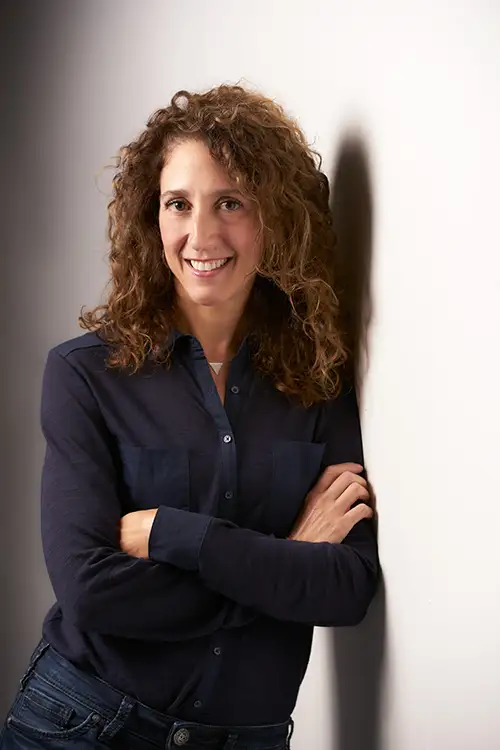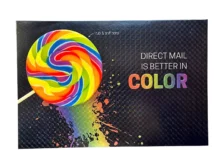
Vicki Strull is the complete package. Graphic designer. Branding enthusiast. Motivational speaker. She’s a big-picture thinker who’s passionate about unpacking consumer behavior, following trends and industry innovations, and leading packaging and design strategy. Strull is the principal behind Vicki Strull Design. Over her 25+-year career, Strull has worked with major brands like Sappi, Hershey’s, SC Johnson and Pizza Hut, to name a few.
Strull says she thinks like a CXO – chief experience officer – when working with companies, bridging business growth outcomes with the consumer experience. When she’s not working with brands on identity and creative direction, she’s sharing her insight through energizing speaking engagements.
PostPress caught up with this visionary designer to find out how she landed in the packaging and design industry, what she sees for the future of packaging and why the sense of touch is an important component to the overall design strategy.
How did your career develop in the packaging design industry?
Back in the 90s, when I was honing my skills as a graphic designer, digital marketing didn’t exist. So naturally, my expertise and interest primarily revolved around print design. As print technologies advanced, I enthusiastically familiarized myself with short runs, variable data and digital finishing. About 10 years ago, recognizing the tremendous potential for growth, I shifted my focus toward packaging design. I consistently emphasize to my clients that a brand’s packaging is its most crucial touch point. Even in an increasingly online and virtual world, a brand cannot truly exist without packaging in the real world.
Tell us why you started your business.
I’m a graphic designer by trade, but people often say to me, “You’re not like any graphic designer I’ve ever met.” And that’s because for every client I’ve had, I connect design concepts to business goals. No design decision is arbitrary, and every design choice advances the vision of the business. For the past 25 years, I’ve operated a design business to create conceptual, meaningful, memorable experiences while supporting my clients’ businesses so that they grow and thrive. Good design choices become great business opportunities.
How is the industry embracing global trends such as the circular economy and sustainability demands from brand owners and consumers?
I’ve observed many significant changes in the industry in recent years. Increasingly, brands are becoming more environmentally responsible as consumers hold brands accountable. As a result, I’ve seen brands shift their packaging to renewable resources, reduce waste by changing the packaging structure or explore packaging that can be repurposed. Suppose we can produce a compelling, lighter package that uses fewer materials while still protecting the product – that makes both business and design sense. Everyone, including shoppers, wins.
In a recent Sappi webinar, I highlighted some health and beauty and household product brands reformulating their products into concentrates, allowing customers to add water once the products are at home. If brands create products that use less water, the product’s volume is reduced, requiring less packaging, which weighs less and uses less fuel to transport, thereby saving money, energy and water. It all adds up. For example, what if a bar of shampoo became the norm? So much good could result for the environment.
What trends are emerging in design and production that will influence the future of the print packaging industry? How do specialty effects such as metallics and coatings fit into this future?
I cannot stress enough the importance of physical things in a progressively online world. In the print packaging industry, we have an opportunity to bridge both worlds.
Think about all the packaging you have saved over the years. Almost everyone I know has at least one saved Apple box. Why? None of us will return our iPhones or iPads, yet we keep that box. Somehow, we feel an emotional connection, and it has meaning for us.
It’s scientifically proven that we remember things better and have a stronger emotional connection to objects when we touch them. Several years ago, Sappi published a piece about the importance of haptics and the endowment effect. That research was groundbreaking in helping designers and converters attach science to the ROI of adding textures, embellishments, foil stamps and tactile finishing to their clients’ print and packaging.
Touch is essential not only in stores on the shelf but also in e-commerce unboxing experiences. Adding metallics, raised coatings, embossed elements and textures to packaging entices people to touch, pick up and hold products. These haptic elements on the packaging also influence perceptions of quality, luxury and value.
What are the biggest challenges in the print packaging industry? How should the industry respond?
Unboxing experiences! Often, with online-only brands, the first time someone encounters the brand in the physical world occurs at home. A package is delivered, someone opens a box and they either are elated, disappointed or ‘meh’ about what they see.
Everything is so beautifully presented and curated online that the arrival of the actual product can be a letdown unless the unboxing experience matches or exceeds the online experience. To earn trust and loyalty, brands need their customers to be thrilled about their unboxing so people will share the experience with their ‘friends’ online, give a good review and write glowing testimonials.
What are your predictions for print packaging in the next five to 10 years?
As consumers become savvier about the circular economy and what is truly good for the environment, brands and suppliers in the packaging industry will shift solutions to consider packaging’s entire life cycle. By reconsidering the supply chain – material sources, chain-of-custody, energy usage and water consumption – brands can address climate change holistically rather than the end-of-life, recycling piece. As designers and converters, it’s our job to educate our clients on the best solutions for their applications.
There are leaders in the industry who already are thinking and working on this more nuanced approach to the circular economy, and I expect that they will lead the way in not only creating a healthier paradigm for packaging but also in educating the public on how recycling is one piece of a circular economy rather than the end-game within a linear economy.
Vicki Strull will give the keynote presentation, “How Embellishments Support the Power of Touch,” at the Print Embellishment Conference in Dallas, Texas, on April 10, 2024. The conference runs April 9-11. Register for the conference at www.fsea.com/print-embellishment-conference. Learn more about Strull at www.vickistrull.com.




